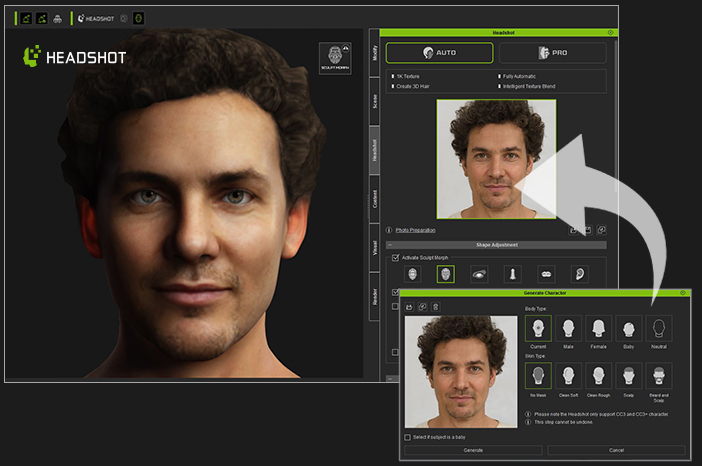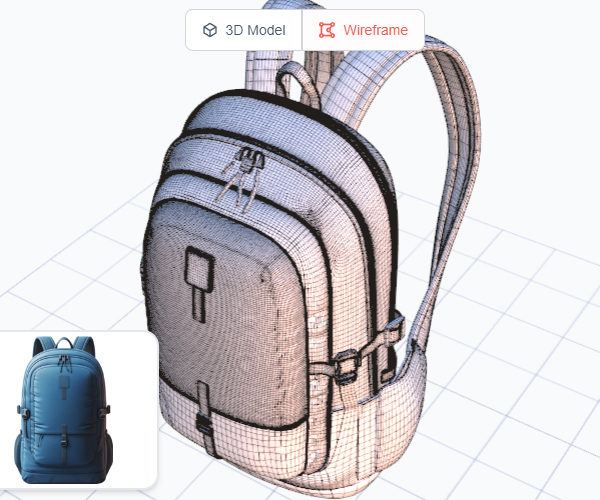Overcoming Space Limits Virtual Stands and 3D Virtual Products for Trade Fairs Find out more The concept of a virtual...
- Home
- 3D Technology
- Applications
-
Projects
-
-
Fashion - Zegna X Project
Automotive - UP Design Project
- PEI Mobility Project
-
Machinery - Breton Project
Manufacturing - Sipro Project
-
Furniture - Stella Project
-
- The Company
- Blog
- Contacts
The Future of 3D?
AI - Artificial Intelligence and 3D Modeling
Artificial intelligence (AI) is influencing the world of technology due to its ability to mimic human intelligence and perform tasks much faster than traditional human cognition, which previously required extensive time. Generative AI is the most innovative aspect of AI. The most well-known application of generative AI is text production, but today, due to outstanding results achieved, there is increasing use in creating high-quality images.
Text to Image: Generative Artificial Intelligence for Images



Before evaluating AI’s contribution to the world of 3D, it’s important to remember its origins: the generative world of two-dimensional images. Now an advanced system that analyzes semantic meaning and context of given text, it accurately interprets and visualizes desired images. Images generated by AI from text have broad applications across various sectors including advertising, design, and virtual reality. It allows marketers to easily create visually appealing content, designers to quickly prototype their ideas, and developers to enhance user experience by generating realistic visual representations based on text inputs. Moreover, this technology has great potential to assist individuals with limited artistic abilities in visually expressing their concepts. With continuous advancements in machine learning algorithms, AI image generation from text promises to transform how we interact with technology, making creative activities more accessible and efficient for professionals in numerous fields.

3D Models and Intelligence
The process of creating 3D models is a time-consuming task requiring skilled experts to manually create each element of the model. However, with the use of artificial intelligence, this process can be revolutionized. AI-based 3D generators can analyze and understand complex data to create compelling 3D models. So, what is artificial intelligence and how does it relate to 3D modeling? Artificial intelligence simulates human intelligence processes using computer systems. It involves creating intelligent machines capable of thinking, learning, and adapting. On the other hand, 3D modeling is the process of creating a digital representation of a three-dimensional object using specialized software. Integrating artificial intelligence and 3D modeling has opened up a completely new world of possibilities across various sectors.
AI for 3D, a reality?
As mentioned, one of the most interesting and complex sectors of artificial intelligence is in the field of generating 3D models. While the photographic context has an infinite heritage of material on which intelligence can “train” and become capable of reproducing any object with plausibility, in the 3D world the situation is more complex and the results are still limited. There are, however, multiple approaches to 3D supported by AI, each achieving different levels of quality. Let’s look at some of the most important ones:

AI texture generator is cutting-edge technology that uses artificial intelligence algorithms to produce highly realistic textures for use in various digital multimedia applications. This innovative tool has revolutionized the texture creation process by automating the generation process, reducing the time and effort required by artists and designers. The AI texture generator uses deep learning techniques to analyze large amounts of image data and identify patterns, textures, and characteristic details of different materials such as wood, metal, fabric, and stone. It then synthesizes these results to generate smooth, high-resolution textures that closely resemble their real-world counterparts. The advanced algorithms used by the AI texture generator ensure accuracy and precision in texture creation, offering exceptional quality results with minimal input from the user. This powerful tool represents a valuable resource for professionals working in fields such as game development, animation, virtual reality, and graphic design, enabling them to effortlessly create realistic textures that enhance the visual realism of their projects.
3D Environment Generation from Video: 3D Gaussian Splatting


Today, thanks to advances in AI technology, we can easily create complex 3D models and environments, complete with physical behaviors. Gaussian Splatting 3D is cutting-edge software technique used by professionals in various sectors such as graphic design, animation, and virtual reality. This robust tool allows users to create extraordinary three-dimensional visual effects with ease and precision. Using techniques based on Gaussian distribution. With its intuitive user interface and extensive customization options, Gaussian Splatting 3D enables artists and designers to unleash their creativity and reproduce visually captivating 3D environments from video. The principle is based on a cloud of points rebuilt by artificial intelligence from the analysis of video frames. Each point is associated with Gaussian characteristics, providing a realistic photographic effect that allows movement in three dimensions, almost like seeing a homogeneous 3D model. Obviously it is not a model in the full sense of the word and the technique has its limits.
3D Model Generation from AI Image Processing

3D Avatar Model Generation

Movement Recognition through AI and Application to 3D Models
Text to 3D Model Generation


Its ability to grasp nuances of language allows manipulation of dimensions, textures, lighting, and other complex aspects of generated models to align them with provided text. The results obtained from AI Generator Model 3D from text are conceptually revolutionary, especially for game developers and visual effects artists. As a result, this technology aims to enable accelerated prototyping processes, enhance visual storytelling capabilities, and open a new realm of possibilities in immersive experiences, significantly reducing the traditionally required manual labor hours for creating three-dimensional resources.




Advantages and Disadvantages in Usage
of Artificial Intelligence in 3D Modeling
SPEED
In addition to creating realistic models, artificial intelligence is primarily capable of generating 3D models at a much faster rate. This is due to its ability to process and analyze large amounts of data in a fraction of the time it takes a human to do so. This has led to greater efficiency and productivity in sectors heavily reliant on 3D models.
VARIATION GENERATION
Another important advantage of using AI in 3D modeling is the ability to create a wide variety of models. This is especially useful in areas such as product design and manufacturing. AI algorithms can analyze different design elements and create multiple variations, saving designers time and effort. This not only speeds up the design process, but also allows for greater creativity and innovation.
USE IN VIRTUAL REALITY AND AUGMENTED REALITY
Artificial intelligence and 3D modeling have also had a significant impact in the world of virtual and augmented reality. With the use of artificial intelligence, virtual and augmented reality experiences can be created faster and with greater precision. The recognition of the space in which to insert 3D models is important. This has opened up new opportunities for sectors such as gaming, education and training
WIDE AUDIENCE
AI-powered 3D generators are making the process of creating 3D models more accessible to a wider audience. With traditional methods, only those with specialized skills and training can create 3D models. However, with artificial intelligence, anyone can generate a 3D model with just a few clicks. This has opened up new opportunities for individuals and companies to incorporate 3D models into their designs and presentations.
QUALITY NOT UP TO EXPECTATIONS
Except in specific areas, the models generated by a description are not always usable. The companies tend to specialize in specific areas (faces, bodies, furniture), and above all produce for the world of gaming and not for industrial use.
NON-PARAMETRIC MODELS
The generated models can be of good quality but in general they are made up of a whole of triangles which sometimes makes them difficult to edit for any changes.
Conclusions
In conclusion, the advent of 3D models generated by artificial intelligence could revolutionize the creative sector in numerous ways. With the ability to automatically generate high-quality, realistic 3D models, designers and artists can now save countless hours of manual work. The precision and accuracy of these AI algorithms is improving. They are particularly effective in recognizing reality in order to visualize it. Furthermore, the use of artificial intelligence in the generation of 3D models opens up new avenues for collaboration and co-creation, as multiple artists can contribute to a project at the same time. While there may be concerns regarding copyright infringement and the originality of AI-generated content, it is clear that this technology improves creativity and efficiency in the field of 3D design. As AI continues to evolve, we can expect further advancements in generating nuanced textures, intricate patterns, and lifelike simulations that will further push the boundaries of digital art.
Our Virtual Reality solution
Find out more news
Virtual Reality VR and industry 4.0
Technology Virtual Reality VR and industry 4.0 Technological evolution has given rise to many innovations in the business and industrial...
Applications of Oculus and VR headsets in Industry
Improve the shopping experience Applications of Oculus and VR headsets in Industry In recent years, Oculus and VR headsets have...
Artificial Intelligence (AI) and 3D Modeling
The Future of 3D? AI – Artificial Intelligence and 3D Modeling Artificial intelligence (AI) is influencing the world of technology...




